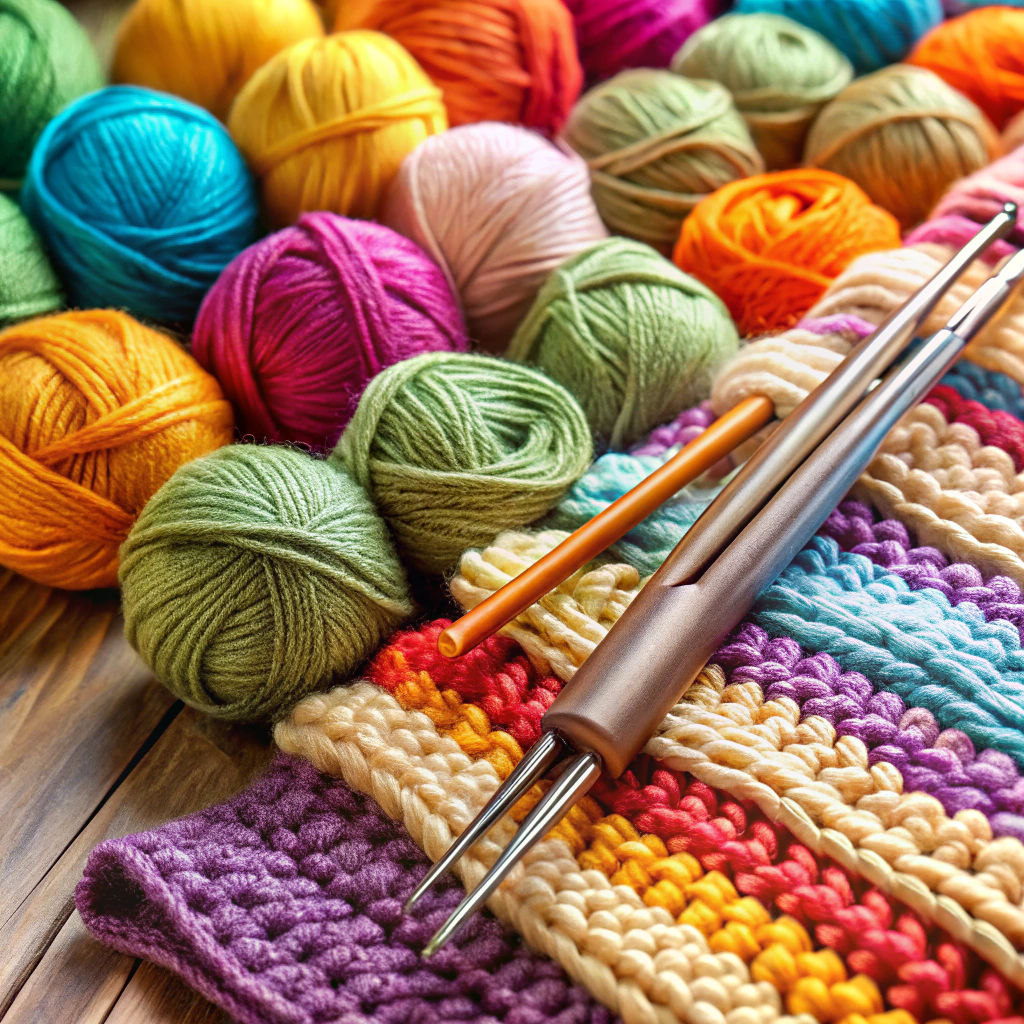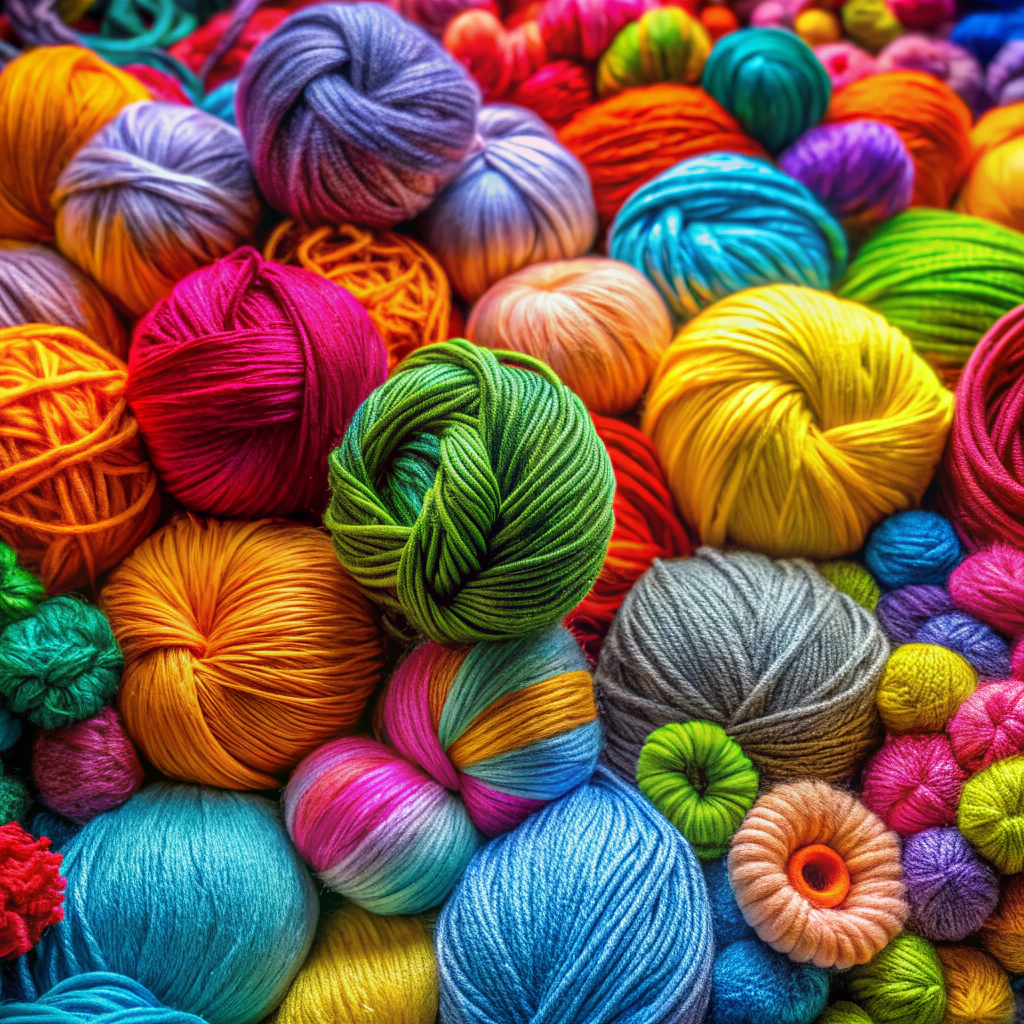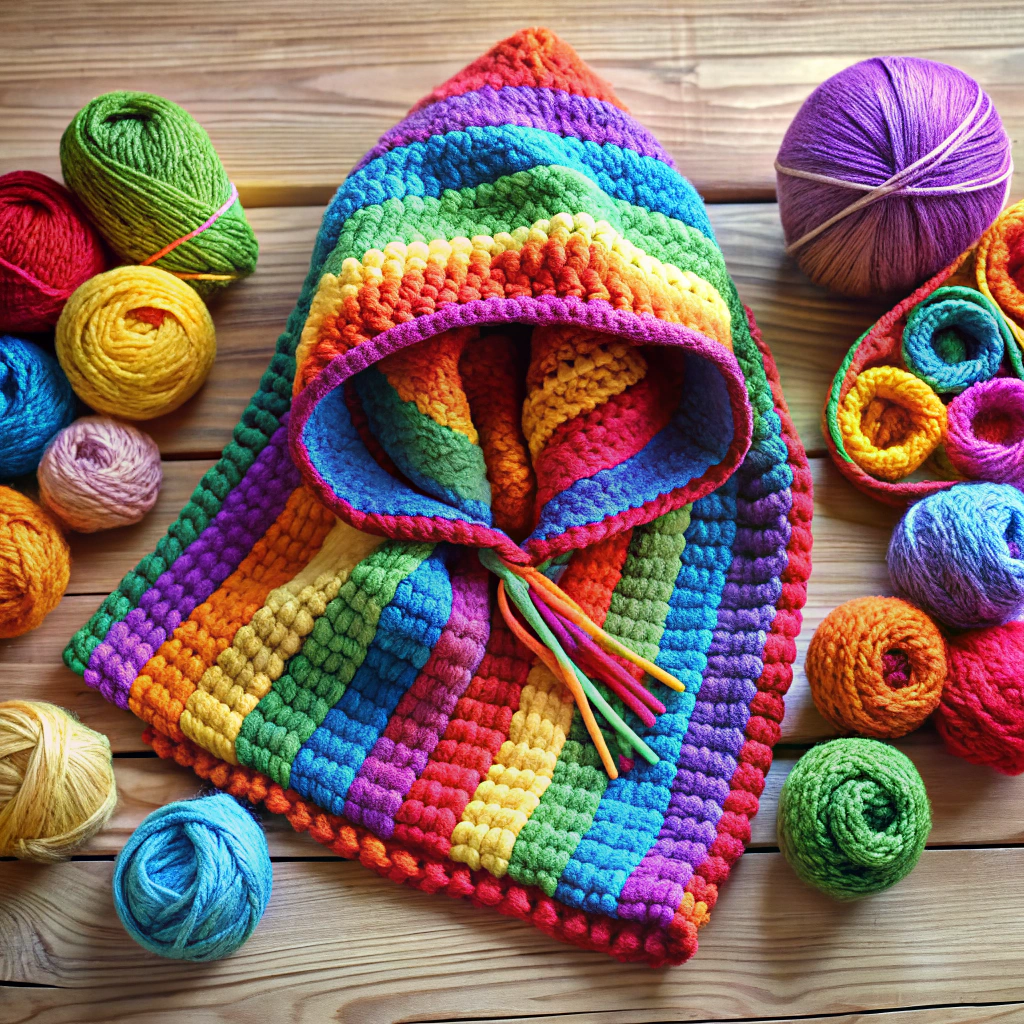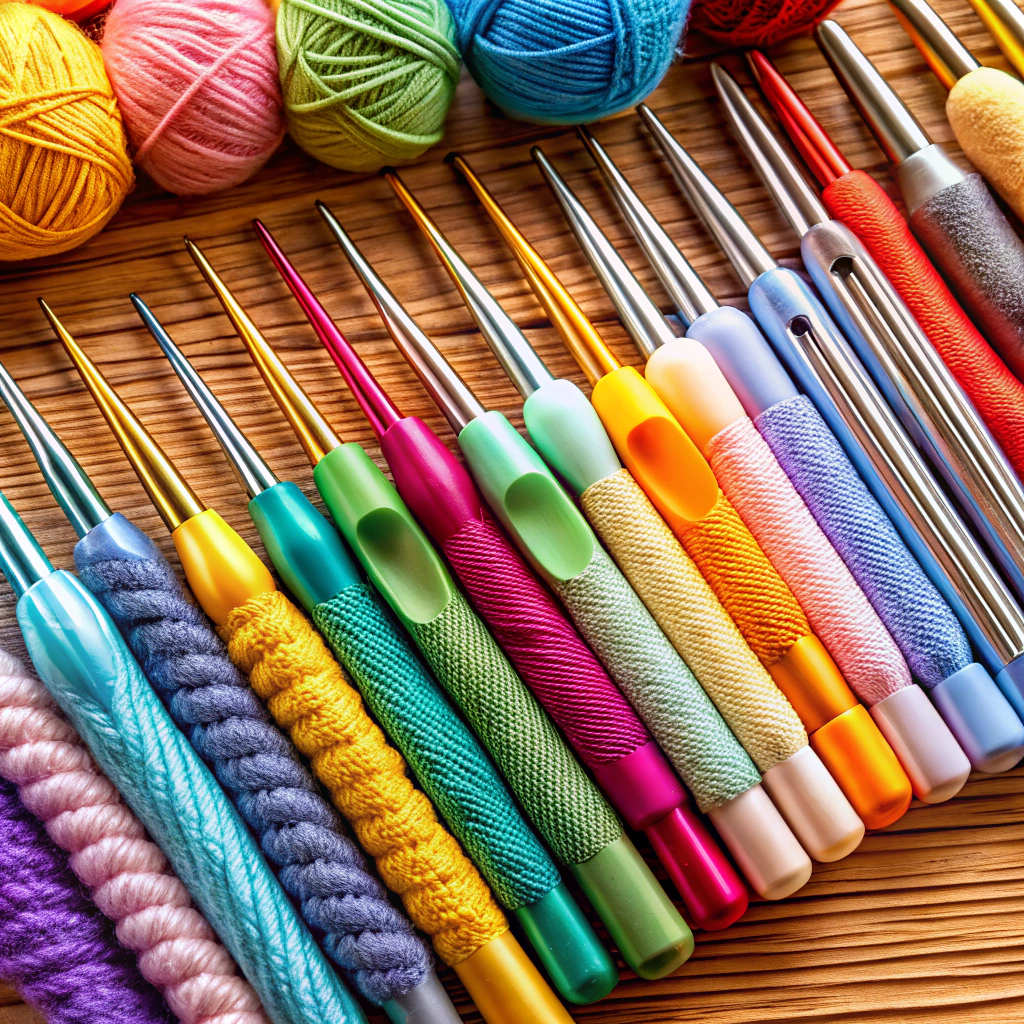Learn how to master crochet gauge to ensure your projects turn out the right size every time.
Ever crafted a beautiful project, only to find it fits your cat better than you? Meet crochet gauge—the sneaky ninja of crocheting that determines your project’s size. Nailing the perfect gauge ensures your scarf, sweater, or spaceship (hey, dream big) actually fits. Stick around: we’ll unravel everything from making gauge swatches to fixing common hiccups. Let’s gauge your interest.
Key takeaways:
- Crochet gauge ensures project size accuracy.
- Matching gauge guarantees project dimensions and consistency.
- Make a gauge swatch to measure stitch and row size.
- Adjust gauge using hook size and yarn weight.
- Use gauge swatch for project accuracy and practice.
What Is Crochet Gauge?
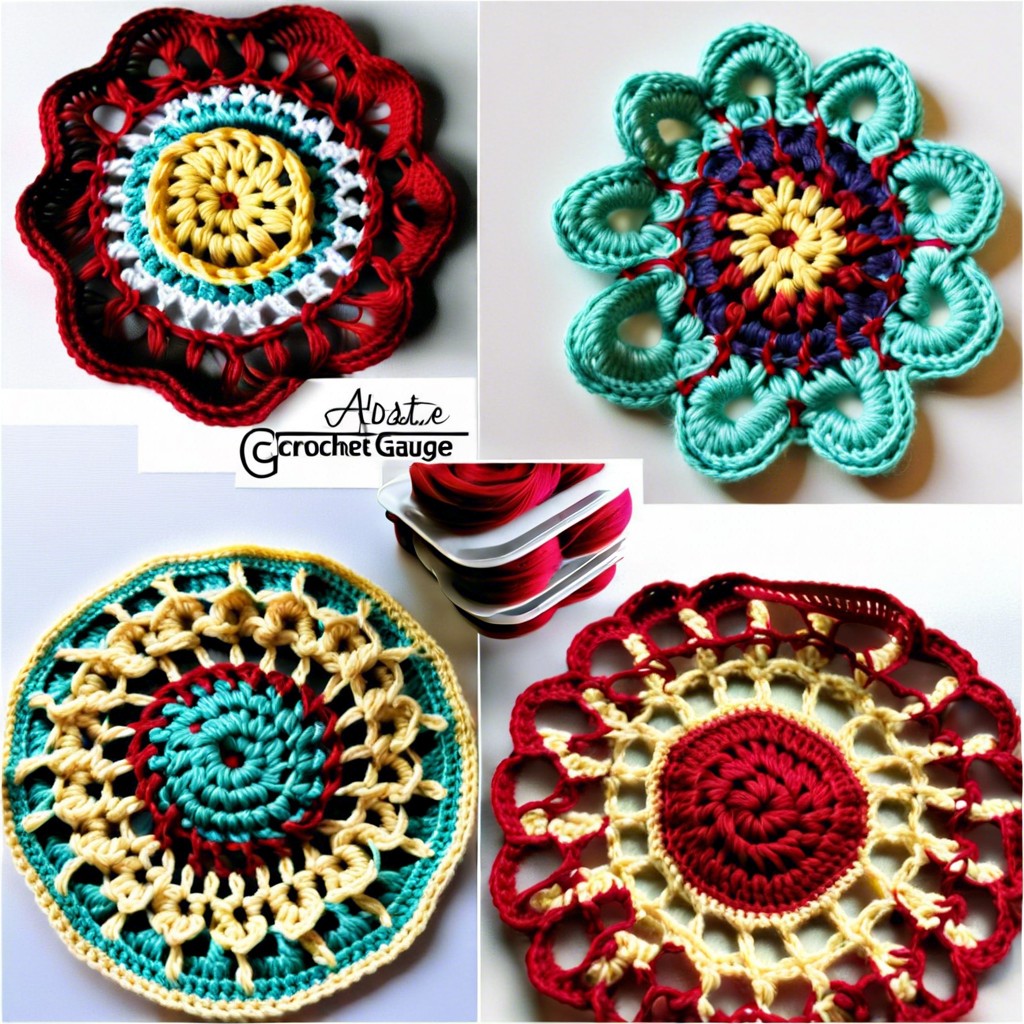
Picture this: you’ve found the perfect crochet pattern and you’re giddy with excitement. But wait! Before diving in headfirst, let’s talk about gauge.
Gauge is essentially the Goldilocks of crochet criteria. It’s the number of stitches and rows within a specific measurement, usually 4×4 inches (10×10 cm). Imagine it as your personal roadmap ensuring your project turns out the right size, rather than morphing into something meant for a giant or, heaven forbid, a doll.
- Stitch dimensions can vary based on several factors:
- Your unique tension and how tightly or loosely you crochet.
- The hook size specified in your pattern.
- The type of yarn you choose.
So, by checking and matching gauge, you’re basically ensuring a well-fitted, stunningly professional piece. Miss it, and there’s a good chance your sweater could double as a tent or shrink to fit a teddy bear.
Importance of Matching Gauge
Imagine spending hours crocheting a sweater only to find it’s better suited for your pet hamster. Annoying, right? That’s where gauge comes in. Nailing the exact stitch and row measurements means your project will have the right dimensions.
Think of it as a map for your yarny adventures. It ensures that what you see in that lovely pattern pic is what you get.
Consistency is another big win here. Matching gauge guarantees your stitches are uniform, making your projects not just the right size but also looking polished and professional. No one wants a wonky blanket – unless that’s the vibe you’re going for, of course.
But hey, gauge isn’t just for garments. Even home decor items, like pillow covers or table runners, benefit from your precision. No one wants a lopsided pillow, no matter how chic you claim it looks.
Finally, avoiding frustration. Starting with the correct gauge can save you from frogging (that’s yarn geek for unraveling) and starting over. We all want to have fun, not battle with our yarn!
So, gauge? Not as scary as it sounds and totally worth your time.
How to Make a Gauge Swatch
First, grab your yarn and the recommended hook size from your pattern. Start with a foundation chain longer than the required swatch size. Because who doesn’t love a little wiggle room?
Next, work a few rows in the stitch specified in the pattern. Aim for a square—give or take. We’re not here to reinvent geometry. If your pattern doesn’t specify the number of rows, just eyeball it. You’ll know when your swatch is swatch-y enough.
Count your stitches and rows. Write it down if you’re prone to forgetting things like we all are sometimes. This will be key when you measure the gauge.
Now that you’ve got your swatch, it’s time to measure. Lay it flat, no stretching allowed. We’re not prepping for a limbo contest. Count the stitches and rows over the given measurement, usually four inches.
Voilà! You’ve made a gauge swatch. Feel like a crochet wizard yet?
Measuring Your Gauge Swatch
Grab your ruler or, even better, a nifty little gauge ruler if you have one. Lay your swatch flat on a table, free from any overzealous cats or curious toddlers.
Place the ruler across the stitches in the middle of your swatch. Nobody’s interested in those risky edge stitches. Count the number of stitches within a 4-inch (10 cm) span. Make a note of that number. It’s like counting sheep, but with yarn.
Now, do the same vertically with the rows. Count how many rows fit into that 4-inch (10 cm) space. Remember—no cheating. This is middle school math without the surprise quiz.
If your stitch count matches the pattern’s gauge, you nailed it. If not, don’t fret – adjustments are up next!
Adjusting Your Gauge: Hook Size
If your gauge is off, the secret lies in your hook size. Here are some quick tips to get you back on track:
- Too tight? Go up a hook size. This lets your stitches breathe a little.
- Too loose? Downsize the hook. It’s like sending your stitches to strict boarding school.
- Check your materials. Different hook materials can affect tension. Metal, wood, and plastic all have their quirks.
- Do a recheck. Making more swatches with different hooks ensures you land on the perfect size.
Tweaking your hook size is a quick fix for gauge woes, making it easier to hit that sweet spot of perfectly even stitches. Keep experimenting until your hooks and yarn form a happy alliance.
Adjusting Your Gauge: Yarn Weight
Switching up your yarn weight can be your secret weapon for hitting that elusive gauge spot on. If you find your stitches too tight or too loose, consider these points:
- Thinner yarn tends to produce smaller stitches, which can tighten your gauge.
- Conversely, thicker yarn creates larger stitches, loosening your gauge.
- If you need to fine-tune your measurements, moving to a slightly different yarn weight can make a noticeable difference without changing your crochet style.
- Always swatch with the new yarn to ensure it meets the pattern’s gauge requirements.
- Remember, yarn labels can be misleading. Even yarns of the same weight category can vary, so don’t skip the swatch.
Experimentation here is key. Patience too. But mainly experimentation.
Fixing Tighter Gauge
Got a crochet project that’s feeling more cramped than a crowded subway? Relax, it happens.
Firstly, try switching to a larger hook. This often loosens your stitches just enough to match the desired gauge.
Use a yarn of the same weight, but one that’s a bit fluffier or less tightly spun. A chunkier yarn can help your stitches breathe a little.
Check your tension—sometimes a tight grip on the yarn strangles your work. Loosen up and let the yarn glide smoothly.
Lastly, remember to breathe. A relaxed crocheter often crochets more loosely. No need to crochet like you’re saving someone from quicksand, right?
There you go, fixed that tighter gauge like a pro!
Fixing Looser Gauge
If your stitches are looking more like floppy pancakes than neat, tight rows, fear not! Start by grabbing a smaller hook. Dropping down even just half a millimeter can work wonders in snugging up those stitches.
Double-check your yarn too. Sometimes yarns are sneaky and skinnier than they appear. Switching to a thicker yarn can provide that extra heft needed to tighten things up.
Pay attention to tension—your hands should be like Goldilocks: not too tense and not too relaxed, but just right. Try wrapping the yarn a bit more tightly around your fingers to gain better control.
And finally, practice makes perfect. The more you crochet, the more consistent your gauge will become. Over time, your hands will gain a sixth sense for the right tension.
Happy hooking!
Common Gauge Issues and Solutions
Ever feel like your crochet project has a mind of its own? Gauge gremlins could be wreaking havoc. Fortunately, there are easy fixes for common gauge woes.
- Too Tight?
- Shift to a bigger hook. Sometimes, bigger is better.
- Relax your grip. Your hook isn’t a pencil; your yarn isn’t under arrest.
- Use a yarn with more stretch. Elasticity is your new BFF.
- Too Loose?
- Opt for a smaller hook. Tiny but mighty.
- Grip your yarn with more tension. Pretend it’s a rowdy toddler. Show it who’s boss.
- Choose a less drapey yarn. Stiffer yarns can rein in your wild stitches.
- Inconsistent Gauge?
- Keep a steady rhythm. Channel your inner crochet metronome.
- Take breaks. Every stitch deserves a breather.
- Practice makes perfect. Remember, even the Cat’s Cradle took a few tries.
By mastering these little tweaks, you’ll keep those crochet gremlins at bay and your projects will thank you.
Practical Uses for Gauge Swatch
A gauge swatch may seem like just a small square of stitches, but it’s a tiny superhero in your project toolkit.
Firstly, it helps you avoid ending up with a sweater fit for your cat instead of yourself. You don’t want to finish that gorgeous cardigan only to find it’s better suited for a fashion-forward chihuahua.
Gauge swatches also come in handy if you’re winging it without a pattern. Want to make an improvised scarf, blanket, or a quirky hat? Whip up a swatch, measure how many stitches make an inch, and use that to calculate how many you need. Voilà, freestyle crochet just got a whole lot less scary.
Need practice with a new stitch? Swatch it out. You get comfortable with the new technique without committing to a full-blown project. Plus, less pressure to get it right the first time. Your swatch will forgive you.
Lastly, swatches are great if you’re mixing yarns. Wondering if that sparkly yarn from your stash will play nice with that squishy alpaca blend? Let a swatch be the referee and decide if they’re a match made in crochet heaven.
So, never underestimate the mighty gauge swatch. It can save time, headaches, and heartache, making your crochet journey smoother and way more fun.
